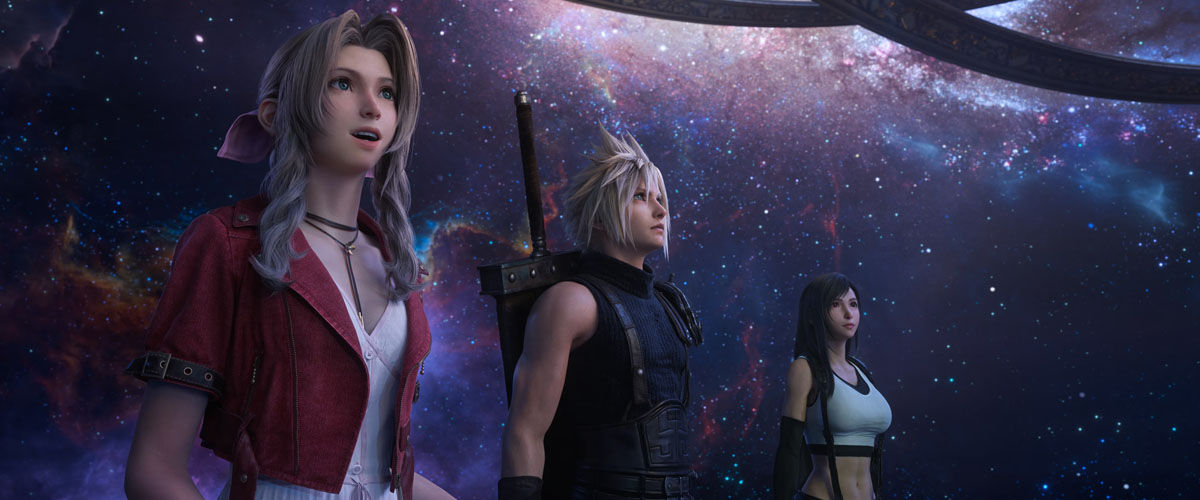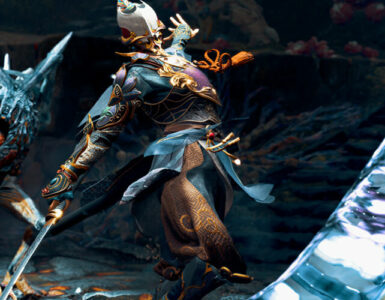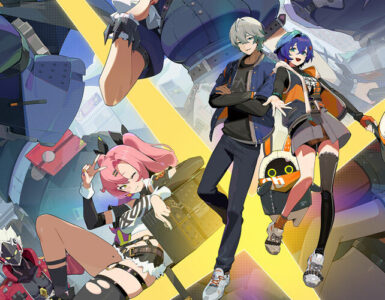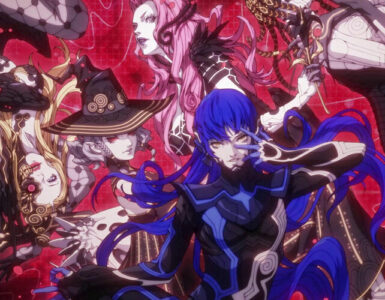Returning to a beloved classic is akin to catching up with an old friend after a long time, where it feels like everything and yet nothing has changed. With Final Fantasy VII Remake, the trip down the memory lane proved gratifying, bringing a polished sheen to a largely familiar narrative, and served as a reminder as to why the original was so iconic in the first place.

The sequel, Final Fantasy VII Rebirth, as part of a planned trilogy, continues to be a shining example of a reimagined classic done right. The highly-anticipated follow-up to Cloud’s journey brims with splendour, vitality, and spirit, culminating in a rewarding payoff that makes all the effort worthwhile. The stakes are high, and the ambition higher, but fans can be assured that it doesn’t fall into the mould of being a middling, well, middle entry – as the second installment in any trilogy is usually the weak link.
Of course, with the final game still in development, there’s no way to know how this latest jaunt will stand up, but as of now, this sprawling Japanese role-playing game (JPRG) is a spectacular labour of love that inherits the best of its predecessor, even if it’s a tad overindulgent and flawed at times.
Like before, Square Enix’s latest puts a fresh spin on the classic story. It adapts the middle chunk of the original, and picks up from the events of the 2020 remake after Cloud and his party escapes Midgar in their continued pursuit of Sephiroth, the big bad who wants to change the world by destroying it. But there’s another evil standing in their way: Shinra, the company responsible for siphoning Mako energy, a source of electricity that brings the planet one step closer to her demise. To save the world, the crew will have to fend off both forces – an undertaking that ends at the Forgotten Capital.

The immediate difference is the sheer vastness of its world. Free from the restraints of Midgar’s narrow corridors and slumps, Final Fantasy VII Rebirth introduces players to lush fields, murky swamps, idyllic beaches, and bustling towns, with terrain actions allowing players to vault over obstacles, climb walls, squeeze through openings, and more. It’s the biggest and most expansive the world has ever been, breathing new life into familiar regions like Nibel and Junon.
While not fully open-world in the way that some of its contemporaries are, the swath of content available is a testament to its impressive scope. There are now new mechanics added to World Intel tasks, assigned once again by Chadley, that vary according to their categorisation. Examining summon crystals, for instance, triggers the Crystal Memory Matrix involving the memorisation and execution of a key press sequence, whereas scanning Lifesprings makes use of the hold-and-release feature.
Admittedly, these optional activities feel like a fresh breath of air at the start and serve as a good way to ease players into a new world, though they do get a little repetitive as gameplay goes on even as attempts are made to balance things out by incentivising effort. Case in point – completing all data entries for the crystals weakens their corresponding summons, magical creatures that can be, well, summoned in battle; similarly, defeating elite enemies rewards materials needed to craft more powerful gear, another new element of gameplay.
Understandably, it’s easy to get lost in the loop of exploring, which makes chocobo riding and fast travel a true blessing. An owned chocobo is a prerequisite for unlocking the latter, even though select locations can still be accessed without it, but the process of wrangling one proves to be more effort-consuming than expected. Unlike most games, Final Fantasy VII Rebirth doesn’t use the same steed to travel everywhere as each region is home to unique chocobo species with specific abilities or traits, such as walking vertically up walls or launching off bouncy mushrooms.
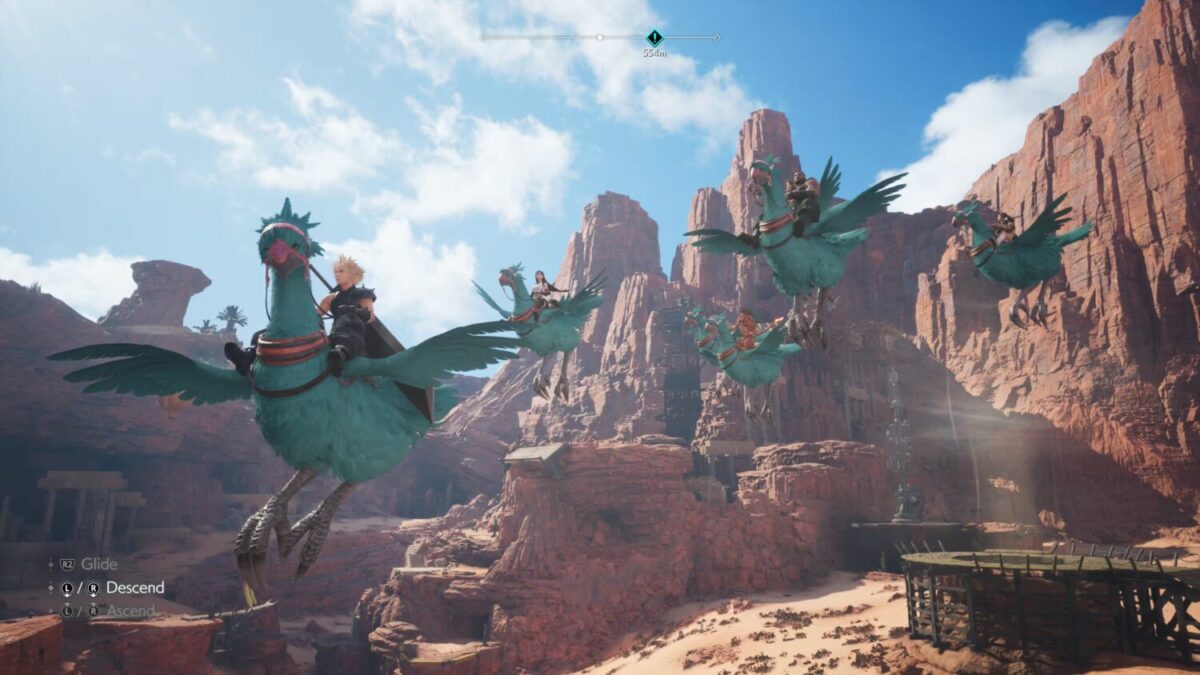
What this means is players will have to tame a chocobo every time they arrive in a new area. Sometimes, it’s automatically given out as part of the main story, but players have to put in the hard work most of the time. Here’s how it works: locate the whereabouts of the chocobo (marked on the map), complete a stealth sequence without alerting its feathered buddies in the vicinity, and voila, Cloud’s made another new friend.
It sounds easy, until it’s not. The process typically involves a sneaking component, be it hiding in tall vegetation and using rocks to lure their attention or using a mine cart as cover, and can be drawn out or frustrating at times. Starting from checkpoints instead of all over does dull the tedium, and completing the challenge unlocks fast travel to various places of interest and chocobo spots, which players are led to by an adorable chocobo chick (remember to give it a head pat!).
With a trusty chocobo companion, there’s no reason to give exploration a miss. The scenic landscapes in Final Fantasy VII Rebirth are breathtaking, and the different locales ooze enough character such that they stand out from one another. Costa del Sol is a prime example, returning with a fresh coat of paint for its resort vibes, beachwear fun, and new segway navigation. Some may find the world a little bloated, but as an open-world enthusiast, the side content is very much manageable.
Variety is important with so much to see and do, and the sequel does well to freshen things up as much as possible. There are plenty of mini-games to go around, from herding mischievous baby moogles to playing the piano to Fort Condor, the tower defense tabletop game from “Episode INTERmission” of Final Fantasy VII Remake Intergrade, and Queen’s Blood.
Queen’s Blood, much like The Witcher 3’s Gwent, will prove to be a delight for card game enthusiasts. A successor to Final Fantasy VIII’s Triple Triad in its own right, it’s first introduced in the town of Kalm, with a questline involving defeating different NPCs scattered around the map, and rising up the ranks. The mini-game features a 3×5 grid, and starts out with a token on the closest three tiles. Each card costs a certain number of tokens and has a corresponding power level that contributes to the score count on the board. Earn more points than your opponent, and victory is yours.
The ability to customise decks adds more depth to the gameplay, allowing cards of different special attributes to be fielded. It’s as fun as it can get challenging, requiring a considerable amount of strategy, opponent reading, and a very strong understanding of its basics.
When it comes to the main story though, this sheer scope of content can be a double-edged sword. Much of the gameplay in Final Fantasy VII Rebirth revolves around combat encounters, but there are moments where progression is locked behind compulsory side activities, including Queen’s Blood, chocobo racing, and the Shinra Parade March mini-game. Some even come with specific winning conditions – players have to take the first spot in chocobo racing, for example – which can be stifling and frustrating for those who aren’t well-versed in that particular genre of gameplay.
That’s not to say the variety isn’t welcome, because it serves as a nice reprieve from combat encounters. However, there seems to be a sense of overindulgence that pervades the overall narrative, making it easy to forget about the party’s pursuit of Sephiroth and the greater danger the planet is in amid all the detours and distractions. Things only really ramp up in the concluding chapters, and the sequel takes its time building up to climatic moments, leading to a lack of urgency for the majority of the story, as well as a diminished impact of the foreboding to come.
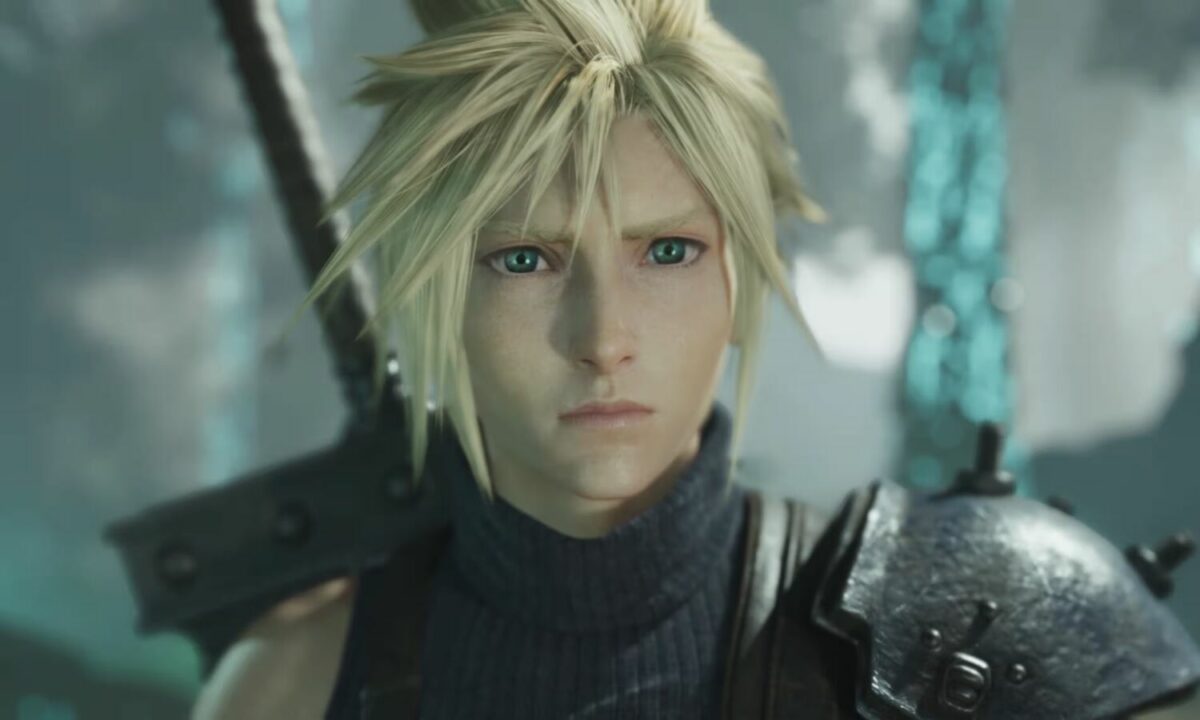
Fortunately, when the time calls, Final Fantasy VII Rebirth still delivers in all the ways that matter – emotionally, visually, and otherwise. Cutscenes are a true beauty to behold, with action set pieces packing a thrilling punch, and the smallest of details, right down to the pores of a character’s face, maintaining a crisp quality. As expected of a gaming heavyweight, everything unfolds like a spectacle on the screen, and there’s almost nothing about the visuals to complain about.
Much like its predecessor, there will be parts of the story, including the ending, that prove divisive, especially since the game raises more questions than it answers with the new storytelling elements. The retelling of its 1997 roots isn’t perfect, but there’s no denying its ability to captivate and charm audiences.
Part of that arresting quality can be attributed to the frenetic combat system, which features the same blend of real-time and tactical touches as in Remake. Party members and their gear can be customised, laying waste to enemies with standard attacks, weapon abilities, spells, summons, and Limit Breaks. There’s a lot of zipping around, combo chaining, dodges, blocks, and Active Time Battle (ATB) activation – familiar territory for returning players, although newcomers may find the juggling of mechanics and constant action overwhelming.
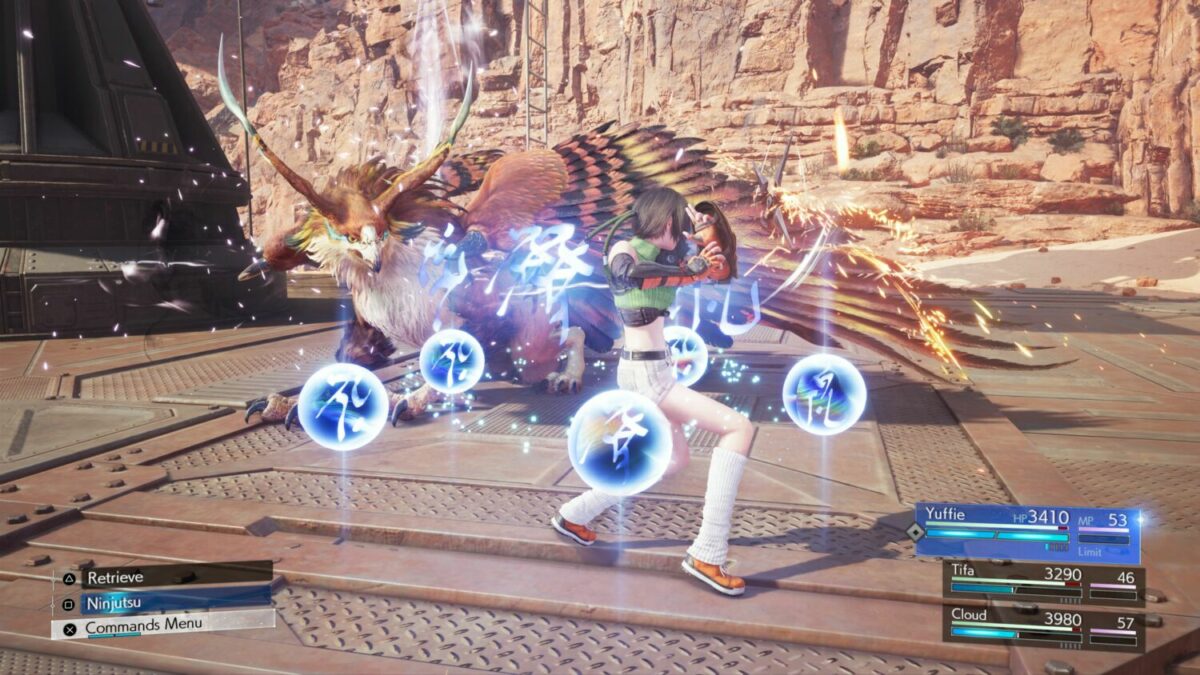
Like before, they will also be able to switch between characters mid-fight, each with different fighting expertise. Tifa, Cloud, Aerith, and Barret continue to kick, slice, and gun down their opponents, but the addition of Yuffie, Red XIII, and Cait Sith brings a more dynamic flair to the whole affair. Where the ninja is a blur on the battlefield with her trusty shuriken, Red XIII features a close-ranged kit. Meanwhile, Cait Sith can call upon a Moogle in battle and cast luck-based abilities.
The new synergy system adds polished fun into the mix, allowing for flashy tag-team attacks. Every playable character is equipped with synergy skills, unlocked via the skill tree called Folio, that are executed in tandem with another. When the synergy gauge is full, synergy abilities can be unleashed, rewarding players with a huge boost of some sort (healing, offensive, or a three-bar ATB gauge) and glorious character animations. Synergy abilities will vary depending on the pair, triggering voice lines specific to them.

For all that combat feels fluid and exhilarating, the occasionally clumsy camera and finicky auto-lock issues still persist. There are times where the former swivels into an awkward angle, such as behind enemies, that blocks off the one’s line of sight, making it easy for fast-moving enemies to dart in and land a few strikes. While generally manageable, this becomes more of an issue when players are forced to play as a character they are not as skilled in, exacerbating the frustration of having to deal with unfamiliar attacking styles.
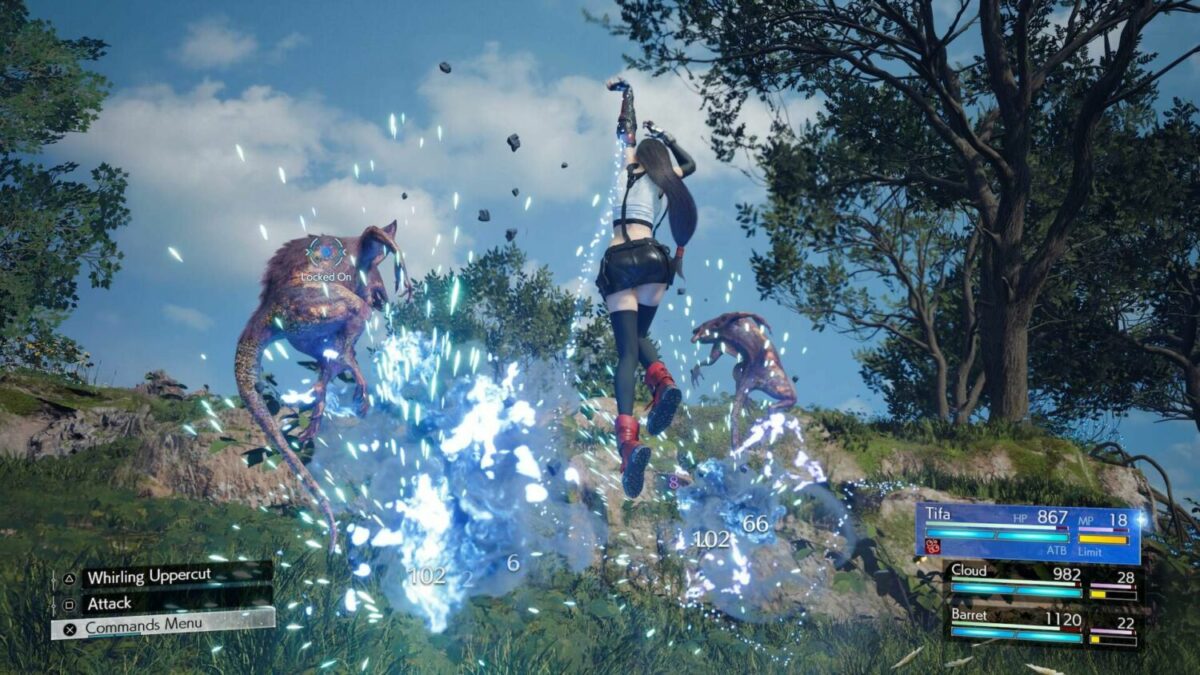
On the note of characters, Final Fantasy VII Rebirth dedicates quite a fair bit of time to fleshing them out, and it’s all the better for it. Cloud, with a more active role to play than in the original, exhibits more expressions and a stronger presence; Tifa and Aerith’s dynamics as the best-girl duo and ride-and-die of sorts continue to bring a smile to the face. Barret is as brash and well-meaning as ever, while Red XIII is the tempered force that brings a comforting presence. Yuffie, meanwhile, is an infectious – some may say boisterous – ball of energy.
Whether through cutscenes or on-the-road conversations, the game often highlights or dives deeper into their relationship as a ragtag team of rogues. At its most lighthearted, Cloud gets teased by Aerith and Tifa for his hair style’s resemblance to a chocobo’s, but when the emotional highs come hurtling, they can hit really hard. The characters, as a bonus, will also enjoy some exposition of their backstories, which adds vulnerability and a human touch to their portrayals.

The introduction of affinity levels emphasises the bond between them further. Choosing the right dialogue options, completing side quests, using synergy abilities/skills in battle, and participating in certain activities will improve Cloud’s relationship with the crew. Longtime can expect the return of familiar characters from both the 1997 classic and the first game, including the Turks (with Elena making her debut), the motorbike-riding Roche, Rufus Shinra, and of course, Vincent Valentine.
A lot of the heavy lifting is done by the voice acting, which breathes so much life into these originally silent characters. Lighthearted moments hit the right tone of playfulness, and the increased immersion is great, but the best performances come from the deft delivery of voice lines during heartbreaking and emotionally-intense scenes – made all the more poignant with the score.
Replacing veteran series composer Nobuo Uematsu, Masashi Hamauzu and Mitsuto Suzuki have crafted a soundtrack befitting of the Final Fantasy guarantee (Uematsu still composed the main theme, however). Battle music features epic, sweeping instrumentals and rhythmic chants, mellowing out to slower, more delicate-sounding notes for sombre portrayals. Returning tunes, such as Sephiroth’s One-Winged Angel and Aerith’s theme song, are a blend of familiar and fresh musical elements. All of that comes together well, with the only chink in the armour being inconsistent audio mixing.
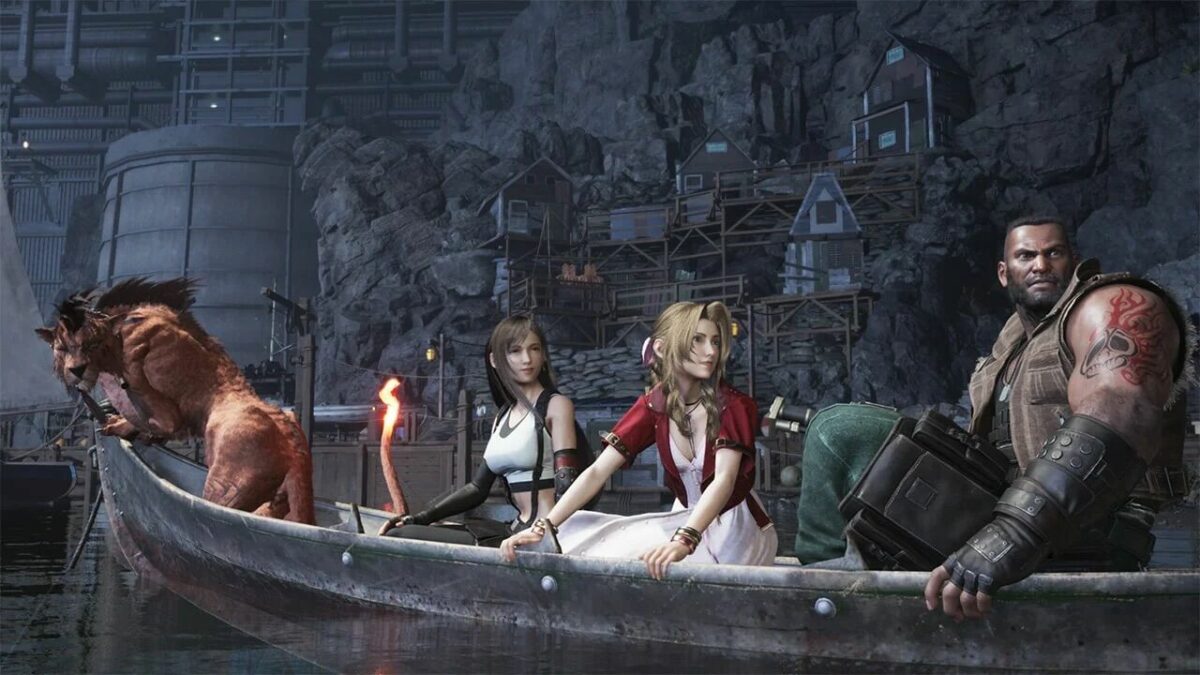
Final Fantasy VII Rebirth took around 52 hours to complete, and it was worth almost every minute. Representing the best of what its predecessor had to offer, the near-perfect entry refines an already impressive formula, and manages to reach even greater heights that many can only hope to match. It takes some tumbles along the way, but for the most part, proves that its first outing isn’t a fluke.
Between the vast world, breathtaking visuals, sheer content variety, satisfying combat, and endearing character dynamics, there’s plenty to love about the continuation of Cloud’s journey. There are still unanswered questions, so hopefully the last game will tie everything nicely together in the same way the original did, and repeat the miracle for a third time. Until then, this is bound to leave its mark behind for many more years to come.
GEEK REVIEW SCORE
Summary
Final Fantasy VII Rebirth is undeniably in the running for the JPRG crown, showing that it’s possible to recapture the magic of a beloved classic – not just once, but twice.
Overall
9.1/10
-
Gameplay - 9/10
9/10
-
Story - 9/10
9/10
-
Presentation - 9.5/10
9.5/10
-
Value - 9/10
9/10

